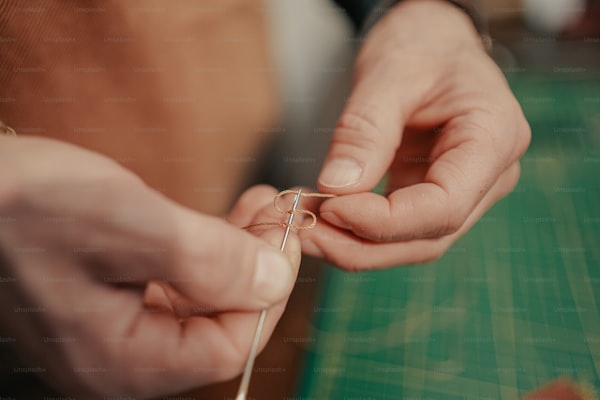Understanding Seam Reinforcement Techniques on Wedding Dresses: Preventing Tearing
Understanding Seam Reinforcement Techniques on Wedding Dresses: Preventing Tearing
Wedding dresses are often considered the centerpiece of any wedding, symbolizing love, beauty, and charm. However, one of the most critical aspects that go unnoticed by many brides is the seams of the dress. These seams are essential for the overall structure and durability of the gown. Therefore, understanding what techniques are used to reinforce seams on a wedding dress to prevent tearing is crucial for both designers and brides alike.
Importance of Seam Reinforcement in Wedding dresses
The seams in a wedding dress play a pivotal role in both the aesthetic and functional aspects of the garment. A wedding dress made from heavy fabric may experience significant stress during movement, posing the risk of tearing at the seams. Consequently, the implementation of effective techniques for seam reinforcement is vital. Here are some common methods:
Common Techniques for Seam Reinforcement
| Technique | Description |
| 1. Double Stitching | Using two parallel lines of stitching to secure the seam, offering extra strength. |
| 2. Bar Tack Stitching | A series of stitches that lock the seam ends, preventing them from unraveling. |
| 3. French Seams | A technique that encloses the raw edges, reducing fraying and providing strength. |
| 4. Reinforced Stitching | Adding extra stitches or using stronger thread at high-stress points, like armholes or waistlines. |
| 5. Use of Interfacing | Applying interfacing to certain areas gives additional stability and structure to the seams. |
| 6. Bias Tape | Using bias tape along the seam allowances to prevent tearing and provide structure. |
Exploring Each Technique in Detail
Let’s delve into these techniques more closely.
1. Double Stitching
Double stitching involves sewing with two lines of thread parallel to each other. This technique is particularly effective on seams that may undergo stress, as the double layer increases durability. When gowns are designed to fit snugly, double stitching ensures that the fabric stays intact during movement.
2. Bar Tack Stitching
Bar tacking uses a series of small stitches to secure the ends of seams, particularly in areas that require extra strength, such as pockets or belt loops. This technique prevents unraveling and adds longevity to the garment. It’s a common practice among experienced designers to incorporate this into wedding dress construction.
3. French Seams
French seams involve sewing two pieces of fabric together with the wrong sides facing, trimming the allowance, and then folding the remaining seam allowance to the inside. This encloses the raw edges and results in a clean finish. Not only does this reduce fraying, but it also offers a delicate and refined look, enhancing the overall beauty of the wedding dress.
4. Reinforced Stitching
Reinforced stitching is used at high-stress points such as armholes, waists, and hips. This technique typically involves using a heavier thread or additional stitches. It’s particularly useful for dresses with fitted bodices, as the tension in these areas can lead to tearing.
5. Use of Interfacing
Interfacing is a fabric utilized to provide support and stability to areas of a wedding dress that may sag or warp over time. By fusing it to the fabric or sewing it in place, designers can ensure that the delicate material drapes beautifully while maintaining its shape.
6. Bias Tape
Bias tape is a strip of fabric cut on the bias, designed to add structure and prevent fraying along seams. It can be sewn over the raw edges of the seams or incorporated into the design, adding both decorative and functional elements to the garment.

When to Use Each Technique
Choosing the right seam reinforcement technique is often context-specific and depends upon several factors:
- Fabric Type: Heavier fabrics like satin or taffeta often require more robust techniques like double stitching or reinforced stitching, while lighter fabrics may do well with French seams.
- Dress Design: A more structured gown might need interfacing and bias tape, while flowy designs could benefit from French seams.
- Wear and Tear: If a dress is intended for a high-activity wedding (like dancing), incorporating multiple reinforcement techniques may offer additional security.
Conclusion: Key Takeaways on Seam Reinforcement
In conclusion, understanding what techniques are used to reinforce seams on a wedding dress to prevent tearing is fundamental for both designers and brides. The right reinforcement technique can make all the difference in ensuring that that stunning gown not only looks beautiful on the wedding day but also lasts through the ceremony and reception without a hitch. When selecting a wedding dress, brides should be mindful of these techniques to ensure their gown excels both in beauty and durability. Always consult with professional dressmakers to understand the best options for specific styles and materials.
Remember, a well-reinforced dress can give you the peace of mind to focus on what truly matters: celebrating your love.
